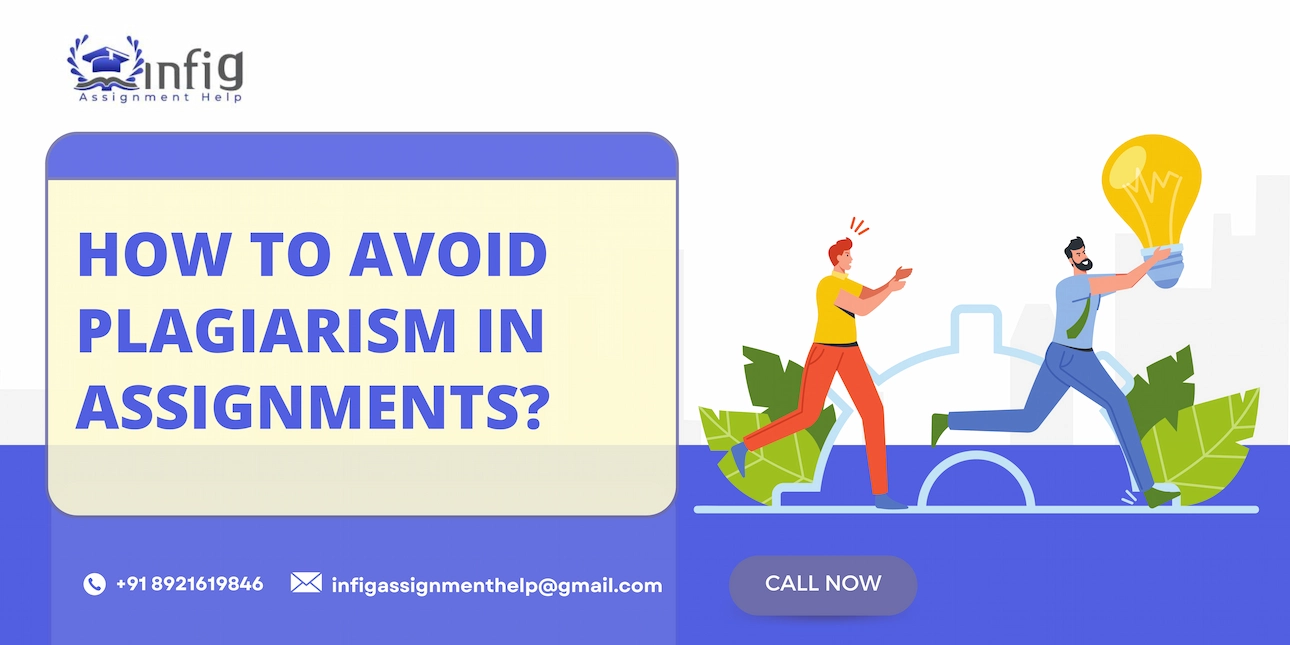Absence of plagiarism is one of the most basic characteristics of a good assignment. Today, with the advancement in technology, checking plagiarism has become pretty easy. As a student preparing assignments for your higher study courses, one important question you may have is ‘how to avoid plagiarism in assignments. In this blog, we answer this with precise guidelines.
What Is Plagiarism?
Plagiarism is the act of reproducing another person’s ideas as your own. It can either be an intentional act or an accidental one. For instance, in the context of assignment writing, not providing proper citations to any references you are including in your paper can fall under the category of plagiarism.
Why Should One Try to Avoid Plagiarism?
Avoiding plagiarism in your writing is important for several reasons. First of all, plagiarism is an act of theft. By committing it, you are stealing another person’s dissertation writer work in exchange for better grades or a good impression or reputation. Being found guilty of committing plagiarism can damage your integrity as a writer or student.
Why Is It Important to Remove Plagiarism from An Assignment?
When you pursue higher education at an institution, you must demonstrate yourself as a genuine student. Plagiarized cdr report writers assignments can put you in a bad light and spoil your academic integrity. Here are some reasons showing the importance of producing assignment without plagiarism.
Expulsion from the course:
Every year, hundreds of students face expulsions from coveted academic programs due to producing plagiarized introduction assignment
Retards your critical thinking:
When you produce a plagiarized assignment rather than working out one on your own, you lose the chance to harness your critical thinking skills.
Damage to integrity and reputation
Being found guilty of plagiarism can cause damage to your academic integrity and reputation as a student. Your peers will look down upon you.
Unfair to honest students
When a student achieves a good score through a plagiarized assignment, it creates an unfair advantage phd thesis writing services over students who rely on honest practices.
Restricts learning from sources
Using external sources as references and giving due credit is a good method to expand your knowledge. Plagiarism puts a stop to that opportunity.
How To Remove Plagiarism from Assignment – Five Best Strategies
Are you a student wondering ‘how to do assignment without plagiarism? The mere thought itself is a commendable gesture. Here are the five best strategies to help remove plagiarism from an assignment.
Use quotations
If you plan to include texts verbatim from another person’s work, dissertation writing services make sure to place the text within quotation marks to show that the aforementioned text is not your own. Add a citation to the source to inform the reader where you have borrowed the quote from.
Include proper citations
Borrowing ideas from previously written literature is a common practice in assignment writing. However, when you do it, do not forget to include proper citations for each reference source you are relying on.
Formulate your perspective
Every assignment is an opportunity to contribute something new to existing literature. Understand the topic thoroughly and form your own perspective to write about the topic to avoid plagiarism.
Rewrite in your own words
Once you have developed a strong understanding of an assignment topic from your research of other sources, coursework writing services the next step is to put your ideas in your own words while giving credit to the sources you use wherever applicable.
Use anti-plagiarism tool
Even if you intend to write a genuine assignment, accidental plagiarism can occur as you can easily get influenced by your readings. To avoid that, testing your writeup for plagiarism using an advanced anti-plagiarism tool is recommended.
What is the University’s Policy on Plagiarism?
There probably won’t be any university out there with a lenient approach to plagiarism. Most universities follow strict procedures against students who are involved in plagiarism. From expulsion from the program to debarring, their policies can vary. Every university emphasizes that students produce original scholarly works for whatever academic project they are required to. We have seen that many universities provide students with guidance on ‘how to avoid plagiarism in assignments through workshops, free plagiarism detection tools, etc.
The Five Common Types of Plagiarism
There are different types of plagiarism varying in severity. From intentional to accidental, knowing the types of plagiarism is essential to steer clear of them in academic writing.
Verbatim plagiarism
Verbatim plagiarism is also known as direct or complete plagiarism. It is the act of passing off someone else’s texts verbatim. The plagiarizer or the one who plagiarizes won’t give any credit to the original author whose text they are passing off.
Self-plagiarism
Using words from your own published works or assignments for a new project without admitting that. Self-plagiarism can occur accidentally when content from your previous work inadvertently finds its way into a new piece of writing.
Accidental plagiarism
Accidental plagiarism or unintentional plagiarism occurs when you forget to cite reference sources in your assignment. It can also happen as a result of poor paraphrasing skills, for instance, using the same group of words in the paraphrasing.
Patchwork plagiarism
Also known as mosaic plagiarism, it is the act of piecing together text from multiple sources without using any citations or quotes and passing them off as your creation. Due to its intentional nature, this type of plagiarism is considered severe.
Paraphrasing plagiarism
While paraphrasing is acceptable in assignment writing, it has to be done by giving due credit to the authors whose work you are paraphrasing. In the absence of this, it can be considered plagiarism too.
What is a Plagiarism Checker or Plagiarism Detection Tool?
A plagiarism checker or plagiarism detection tool is an advanced software program designed to identify plagiarism in a text or piece of writing. With the advancements of AI, plagiarism detection has become highly sophisticated research paper writer and it is possible to identify even minute cases of plagiarism. From licenced to free options, there are hundreds of plagiarism detection tools out there. Some of the most popular ones among them include Turnitin, Grammarly and Copyscape.
How To Use Plagiarism Detection Tools for Accurate Results?
While there are many plagiarism detection tools out there, not all of them fetch you the desired result assignment writers . Here are some criteria for choosing and using plagiarism-checking tools for precise results.
Choose a tool with a good rating
The first step is to find a plagiarism detection tool that has a good reputation and rating. If your institute recommends any specific tool, go for it as they may use its results as the final.
Go for a licensed tool
The Internet is filled with hundreds of plagiarism tools, licensed to free versions. The free versions may only offer limited checking features and won’t give a foolproof result. So, it is recommended to go with a licensed version.
Get familiar with the features
Once you have zeroed in on a plagiarism detection tool, get familiar with its settings and features. For instance, how to avoid plagiarism in assignments using its custom options.
Rectify the flagged cases
After running the plagiarism test, note down the flagged cases and carefully review them. Take steps to find a way to prevent plagiarism from the text by adding citations and paraphrasing it more uniquely.
Repeat plagiarism check after corrections
Don’t stop with one round of testing and corrections. After adding rectifications in your text, perform another round of checking to ensure that your assignment is indeed plagiarism-free.
Conclusion
Plagiarism is one of the most common causes of students failing assignment writing and being expelled from reputable institutions. Therefore, when preparing your academic writing, the question “How to avoid plagiarism in assignments” should be the first challenge to tackle.
We hope you gained a deeper understanding of plagiarism and how to keep out plagiarism from assignments from this blog. We are excited to learn how helpful this blog was for you and if you have any further questions regarding this topic conclusion for assignment . Feel free to share your questions and feedback in the comments.
FAQ
What's the simplest method to avoid plagiarism in my academic writing?
The simplest method to prevent plagiarism in your academic writing is to properly cite every reference source you are relying on and use proper paraphrasing of information. On top of that, ensure additional safety by checking your work for plagiarism using a licensed plagiarism detection tool.
Is it possible to avoid being flagged for plagiarism while copying and pasting text?
No. Copying and pasting text without proper attribution can lead to being flagged for plagiarism. So, stay clear of doing that. Instead, use quotations with citations or paraphrase the text giving due credit to the contributor.









